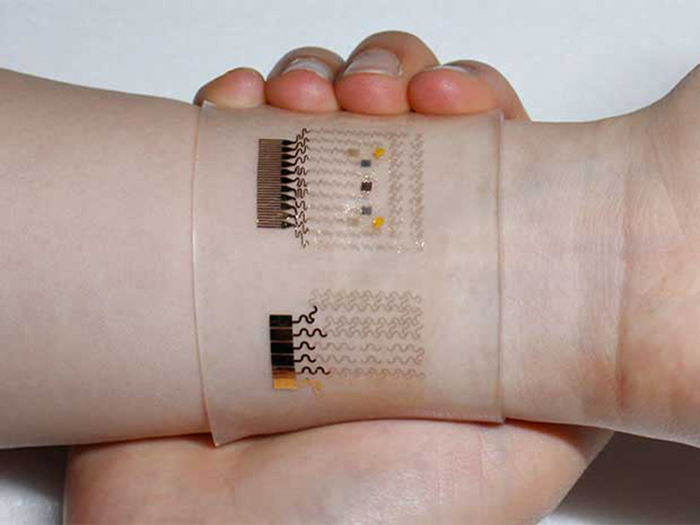The rapid development of smart city, industry 4.0 and Internet of Things has led to a large demand for RFID intelligent identification products in the market. Radio Frequency Identification (RFID), also known as radio frequency identification technology, is a non-contact automatic data acquisition technology, and is one of the core technologies of the Internet of Things. The most important feature of this system is that it can collect hundreds and thousands of object information simultaneously in one second without mechanical or optical contact. At present, the technology has been widely used in logistics warehousing, transportation, security, anti-counterfeiting, mobile payment and almost all other fields.
Research Status At Home And Abroad
The United States is an active promoter of the application of RFID tags. It is at the forefront of the world in the field of the establishment of RFID standards, the development and application of hardware and software technology. European RFID standards follow the US-led EPCglobal standards. The research and development of RFID in European and American countries mainly focus on standard setting, chip manufacturing, reader manufacturing and system integration. China is the world's largest supplier of RFID tags. The total production of RFID tags accounts for about 60% of the world's total. Especially the high-frequency RFID tags, China has basically realized all the localization from chip to antenna.
The main bottleneck of popularizing the application of RFID system is the price, size and environmental adaptability of tags. At present, copper wire winding method and aluminum foil etching method are widely used to manufacture RFID tags in China, while ceramic sintering method is basically used in foreign countries. Common problems are:
(1) Pollution of the environment.
(2) Label base material is single and its application field is limited.
(3) Low manufacturing efficiency.
(4) Large label size.
(5) High cost.
(6) Low manufacturing accuracy.

In the past few years, many research institutes at home and abroad believe that using conductive silver paste screen printing to produce RFID tags is the most effective technology to achieve low cost, miniaturization, high precision, strong adaptability and large-scale production of tags. Although the printing technology in the field of image reproduction is fast, efficient, fine lines and accurate overprinting, due to the poor conductivity of conductive silver paste and the limitation of conductive mechanism, only high silver content conductive silver paste and low screen number can be used, which are affected by dozens of factors such as ink viscosity, ductility, fluidity, scraping pressure, screen stretching and screen interference. The printed RFID tag conductor structure is deformed, the boundary is rough, the short circuit is broken, and the actual radiation efficiency is quite different from the theoretical radiation efficiency. Looking at the domestic and foreign research, there are almost no scientific and effective control means to solve the above problems. Therefore, there are few successful cases to realize the industrialization of RFID tags with this technology at present.
To sum up, on the one hand, the market demand for RFID tags is more and more vigorous. On the other hand, the manufacturing technology of RFID tags still has some problems, such as low efficiency, high cost, pollution of the environment, single base material and so on. The market urgently needs new manufacturing technology to break through the contradiction between demand and supply.
Trend and demand analysis
With the successful development of graphene materials with high conductivity by Sir Andre Heim and Sir Constantine Novosholov, Nobel Laureates of the University of Manchester, the decline in graphene prices and the improvement of product quality have greatly stimulated the application of downstream products, such as various kinds of conductive circuits, sensors, medical monitors and other graphene electronic products. Graphene material has high conductivity due to its micro-topological structure. Its conductive mechanism is different from that of silver particles.
Advantage
There are two advantages in making filling composite conductive slurry by powdering Graphene.
(1) Strong compatibility. Graphene slurry can be printed on almost all substrates such as plastic film, paper, ceramics, cotton cloth and wood.
(2) High cost performance. Compared with the existing conductive silver slurry, graphene slurry has better conductivity and greater cost advantages. With the development of graphene production technology and cost reduction, graphene conductive slurry will gradually occupy the market share. It is estimated that the market scale of graphene application in conductive slurry will reach 200 million RMB by 2020.
At present, some foreign manufacturers of RFID systems have restarted the use of graphene slurry to print RFID electronics.
Key technologies and industrial research of labels, such as BGTMaterials Limited (BGTM) in the UK.
However, no other company in China has developed this technology industrially for the time being.

At present, the production capacity of graphene in China is expanding rapidly, and there are many large-scale graphene manufacturers in China. For example: Ningbo Mexico Technology Co., Ltd., Chongqing Mexico Technology Co., Ltd., Hongna New Material Technology Co., Ltd., Jinan Mexico New Material Technology Co., Ltd., Suzhou Greifeng Nanotechnology Co., Ltd., Nanjing Xianfeng Nanotechnology Co., Ltd., Changzhou Two-dimensional Carbon Technology Co., Ltd., the graphene output of each company can reach 100 tons per year.
According to the "Research Report on Market Prospects and Investment Opportunities of China's Internet of Things Industry 2017-2022" released by China Business Industry Research Institute, the scale of China's RFID market will reach 60 billion yuan in 2018.
Based on this, by analyzing the performance parameters of RFID tags, optimizing the printing suitability of graphene conductive paste, applying gravure printing technology to achieve a new manufacturing technology of RFID tags, which is green, large-scale, high efficiency, high quality, low cost and suitable for various substrates, has become an inevitable trend in the industry.

Epilogue
Through the above research methods and technical routes, in order to obtain high conductivity, meet the needs of the Internet of Things industry RFID tags, achieve large-scale industrialization of RFID tags manufacturing, manufacturing process is completely free of waste, to ensure green environmental protection. The technological iteration of Graphene RFID tags will become the next outlet of the Internet of Things industry.
Warm Link: For more information about RFID-based products and news, you can send an email or call for inquiries.
+86-755-26979016
marketing@asiarfid.com